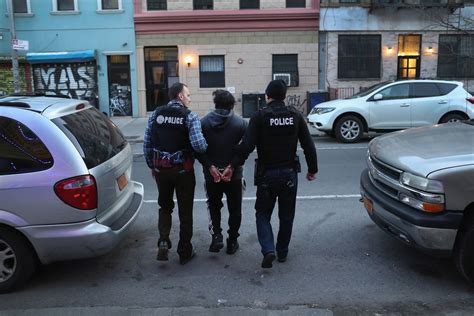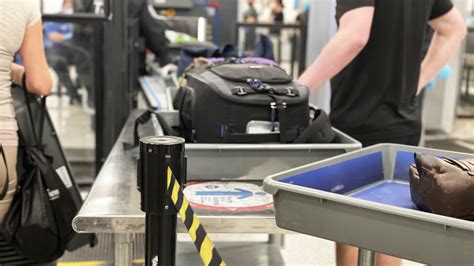
A U.S. citizen was mistakenly detained by Immigration and Customs Enforcement (ICE) agents at a Massachusetts courthouse last week, after agents confused him with someone fitting a similar general description of an individual they were seeking, sparking outrage and raising concerns about ICE’s practices regarding identification and detention.
According to court documents and statements from involved parties, the incident occurred when ICE agents, acting on a warrant for an undocumented immigrant with a criminal record, apprehended the wrong individual as he was leaving a court hearing. The man, a U.S. citizen whose name has been withheld to protect his privacy, was held for several hours before authorities realized their error and released him.
The American Civil Liberties Union (ACLU) of Massachusetts has condemned the incident, calling it a clear violation of the man’s constitutional rights and demanding a thorough investigation into ICE’s procedures. Carol Rose, executive director of the ACLU of Massachusetts, stated, “This egregious error is a stark reminder of the potential for abuse when law enforcement agencies prioritize immigration enforcement over due process and fundamental rights. ICE’s actions not only traumatized an innocent individual but also undermined the integrity of the judicial system.”
The mistaken detention has reignited the debate over ICE’s presence in courthouses and the impact of such enforcement actions on public safety and access to justice. Critics argue that ICE’s courthouse arrests deter immigrants from appearing in court, whether as defendants, witnesses, or victims, thereby hindering the administration of justice.
ICE has acknowledged the error and stated that it is reviewing the circumstances surrounding the incident to prevent similar mistakes in the future. In a statement, an ICE spokesperson said, “While ICE is committed to conducting targeted immigration enforcement, we also recognize the importance of ensuring that our actions are carried out with the utmost care and precision. We are taking steps to review our procedures and provide additional training to our officers to minimize the risk of errors.”
The incident has prompted calls for greater transparency and accountability in ICE’s enforcement operations, as well as renewed efforts to limit ICE’s presence in sensitive locations such as courthouses and schools. Lawmakers and advocacy groups are pushing for legislation that would create buffer zones around these areas, protecting individuals from immigration enforcement while seeking access to essential services and legal proceedings.
Detailed Account of the Incident
The incident unfolded at a Massachusetts courthouse on [Date Redacted], when the man, a U.S. citizen of [Nationality Redacted] descent, appeared for a routine hearing related to [Nature of Hearing Redacted]. As he exited the courthouse, he was approached by plainclothes ICE agents who identified themselves and informed him that he was being detained on suspicion of being an undocumented immigrant with a criminal record.
According to the man’s account, the agents provided minimal information about the basis for his detention and refused to allow him to contact his attorney or family members. He was transported to an ICE detention facility, where he was subjected to questioning and processing. Despite his repeated assertions that he was a U.S. citizen and had never been convicted of a crime, the agents continued to hold him.
It was only after several hours of detention, during which the man provided documentation proving his U.S. citizenship, that ICE officials realized their mistake and released him. By that point, he had suffered significant emotional distress and disruption to his personal and professional life.
Legal and Constitutional Implications
The mistaken detention raises serious legal and constitutional questions regarding ICE’s authority to arrest and detain individuals without proper identification or reasonable suspicion. The Fourth Amendment to the U.S. Constitution protects individuals from unreasonable searches and seizures, requiring law enforcement officers to have probable cause before making an arrest.
In this case, it appears that ICE agents lacked probable cause to believe that the man was an undocumented immigrant or that he had committed any crime. The agents’ reliance on a “general description” as the basis for the arrest suggests a lack of due diligence and a disregard for the man’s constitutional rights.
Furthermore, the detention may have violated the man’s Fifth Amendment rights, which guarantee due process of law. Due process requires that individuals be given fair notice of the charges against them and an opportunity to be heard before being deprived of their liberty. In this case, the man was not provided with adequate information about the reasons for his detention and was denied the opportunity to challenge the agents’ actions.
The ACLU of Massachusetts has argued that ICE’s actions constitute unlawful imprisonment and may give rise to a civil rights lawsuit. The organization is calling for a thorough investigation into the incident and appropriate disciplinary action against the agents involved.
Impact on Courthouse Access and Public Safety
The mistaken detention has renewed concerns about the chilling effect of ICE’s presence in courthouses on immigrant communities. Advocates argue that ICE’s courthouse arrests deter immigrants from appearing in court, even when they are legally required to do so or when they are seeking protection as victims of crime.
This can have a significant impact on public safety, as it can prevent victims of domestic violence, sexual assault, and other crimes from reporting these incidents to the authorities. It can also hinder the prosecution of criminal cases, as witnesses may be reluctant to come forward if they fear being detained by ICE.
Several jurisdictions have taken steps to limit ICE’s presence in courthouses, recognizing the importance of ensuring access to justice for all members of the community. Some courts have issued orders prohibiting ICE agents from making arrests inside courthouses without a judicial warrant. Others have implemented policies requiring ICE agents to coordinate with court officials before conducting enforcement actions.
ICE’s Response and Review of Procedures
ICE has acknowledged the error and stated that it is committed to preventing similar mistakes in the future. The agency has launched an internal review of the circumstances surrounding the incident, with the goal of identifying any deficiencies in its procedures and implementing corrective measures.
In its statement, ICE emphasized that it is committed to conducting targeted immigration enforcement, focusing on individuals who pose a threat to public safety or national security. The agency also stated that it respects the rights of all individuals, regardless of their immigration status.
However, critics argue that ICE’s response is insufficient and that more systemic changes are needed to address the underlying problems. They are calling for greater transparency and accountability in ICE’s enforcement operations, as well as stronger oversight from Congress and the Department of Homeland Security.
Call for Legislative Action
In response to the incident, lawmakers and advocacy groups are pushing for legislation that would create buffer zones around courthouses, schools, and other sensitive locations, protecting individuals from immigration enforcement while seeking access to essential services and legal proceedings.
The proposed legislation would prohibit ICE agents from making arrests or conducting surveillance within these buffer zones without a judicial warrant. It would also require ICE agents to obtain the consent of local authorities before conducting enforcement actions in sensitive locations.
Proponents of the legislation argue that it is necessary to protect the rights of immigrant communities and ensure that all individuals have access to justice and essential services without fear of being detained by ICE. They also argue that it would enhance public safety by encouraging victims and witnesses of crime to come forward without fear of deportation.
Opponents of the legislation argue that it would hinder ICE’s ability to enforce immigration laws and protect national security. They argue that ICE agents should be allowed to conduct enforcement actions in any location where they have probable cause to believe that an individual is in violation of immigration laws.
The debate over the proposed legislation is likely to continue in the coming months, as lawmakers grapple with the competing interests of immigration enforcement and the protection of civil rights.
Background on ICE Courthouse Arrests
ICE’s practice of arresting individuals at courthouses has been a contentious issue for several years. The agency asserts that courthouses are public places and therefore permissible locations for enforcement actions. However, critics argue that such arrests undermine the judicial process and deter individuals, particularly immigrants, from participating in the legal system.
Courthouse arrests can have a chilling effect on immigrants who need to appear in court for various reasons, including:
- As defendants in criminal or civil cases
- As witnesses to crimes
- As victims seeking protection orders
- As parents involved in custody disputes
Fear of arrest can prevent individuals from seeking legal redress or cooperating with law enforcement, thereby hindering the administration of justice. Several legal organizations and advocacy groups have filed lawsuits challenging the legality of ICE’s courthouse arrest policies, arguing that they violate due process and equal protection rights.
The Broader Context of Immigration Enforcement
The mistaken detention incident occurs within a broader context of heightened immigration enforcement under recent administrations. ICE has significantly increased its enforcement activities, leading to a surge in arrests and deportations.
This has resulted in widespread fear and anxiety within immigrant communities, as individuals worry about being separated from their families and deported to countries they may no longer know. The increased enforcement has also strained resources and led to concerns about due process violations and the mistreatment of detainees.
Community Response and Advocacy Efforts
The mistaken detention has sparked outrage and condemnation from community organizations, advocacy groups, and elected officials. Many have expressed solidarity with the wrongly detained individual and called for accountability and reform.
Community organizations are providing legal assistance and support to immigrants who have been affected by ICE enforcement actions. They are also organizing protests and demonstrations to raise awareness about the issue and demand an end to ICE’s courthouse arrest policies.
Advocacy groups are working to educate the public about the impact of immigration enforcement on communities and to advocate for policies that protect the rights of immigrants. They are also supporting legal challenges to ICE’s policies and practices.
Elected officials are calling for investigations into ICE’s enforcement actions and for reforms to ensure that the agency operates within the bounds of the law. Some are also proposing legislation to limit ICE’s presence in sensitive locations and to protect the rights of immigrants.
The Importance of Due Process and Accuracy
The mistaken detention incident underscores the importance of due process and accuracy in immigration enforcement. Law enforcement agencies must have clear guidelines and procedures for identifying and detaining individuals, and they must ensure that their actions are based on reliable information and probable cause.
Due process requires that individuals be given fair notice of the charges against them and an opportunity to be heard before being deprived of their liberty. It also requires that law enforcement agencies respect the rights of all individuals, regardless of their immigration status.
Accuracy is essential to ensure that innocent individuals are not wrongly detained or deported. Law enforcement agencies must use reliable methods for verifying the identity and immigration status of individuals, and they must take steps to minimize the risk of errors.
The mistaken detention incident serves as a cautionary tale about the dangers of relying on stereotypes and generalizations in immigration enforcement. It also highlights the importance of oversight and accountability to ensure that law enforcement agencies operate within the bounds of the law and respect the rights of all individuals.
The Future of Immigration Enforcement
The future of immigration enforcement in the United States remains uncertain. The Biden administration has pledged to pursue a more humane and targeted approach to immigration enforcement, but it faces significant challenges in implementing these reforms.
The political climate surrounding immigration remains highly charged, and there is strong opposition to any efforts to roll back enforcement policies. The courts are also likely to play a significant role in shaping the future of immigration enforcement, as legal challenges to ICE’s policies and practices continue to make their way through the system.
Ultimately, the future of immigration enforcement will depend on the choices that policymakers and the public make about how to balance the competing interests of border security, national security, and the protection of civil rights.
FAQ Section
1. What exactly happened in the ICE arrest snafu at the Massachusetts courthouse?
An individual, a U.S. citizen, was mistakenly detained by ICE agents at a Massachusetts courthouse. The agents believed he matched the general description of someone they were seeking – an undocumented immigrant with a criminal record. The man was held for several hours before ICE realized the error and released him.
2. Why is this incident considered a significant issue?
This incident is significant because it raises concerns about potential violations of constitutional rights, specifically the Fourth Amendment protection against unreasonable searches and seizures and the Fifth Amendment guarantee of due process. It also highlights the potential chilling effect of ICE presence in courthouses, deterring immigrants from accessing the legal system, regardless of their status or need for legal recourse. It undermines trust in the legal system, especially from vulnerable communities who might be hesitant to report crimes or act as witnesses.
3. What has been the response from the ACLU and other organizations?
The ACLU of Massachusetts has strongly condemned the incident, calling it an egregious error and a violation of the man’s constitutional rights. They are demanding a thorough investigation into ICE’s procedures. Other advocacy groups have echoed these concerns, emphasizing the need for greater accountability and transparency in ICE enforcement operations. They’re advocating for policies limiting ICE’s presence in sensitive areas like courthouses and schools.
4. What is ICE saying about the incident, and what steps are they taking?
ICE has acknowledged the error and stated that it is reviewing the circumstances surrounding the incident to prevent similar mistakes in the future. They claim to be committed to targeted immigration enforcement and recognize the importance of ensuring actions are carried out with care and precision. They claim to be reviewing procedures and providing additional training to officers, however, many critics view this as insufficient and are demanding systematic changes.
5. What are the potential long-term consequences of this type of mistaken arrest?
Potential long-term consequences include a further erosion of trust between immigrant communities and law enforcement, making it more difficult to investigate and prosecute crimes. It could also lead to legal challenges and lawsuits against ICE for violating individuals’ rights. From a policy perspective, this incident may fuel further debate and push for legislative action to limit ICE’s authority and increase oversight of its operations, particularly in sensitive locations.









